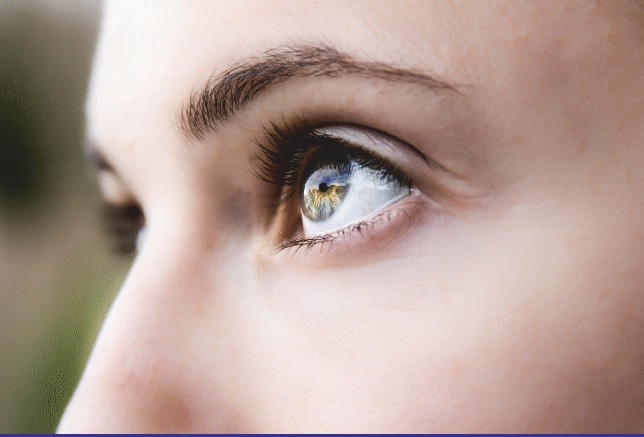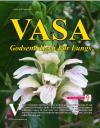The eyes are magnificent piece of natural engineering incomparable even to the most advanced mechanical lens in the market.
The eyesight is vital to our daily lives but people least bother about the eyes and are more concentrated in the machines, computers & mobiles that release hazardous rays affecting the normal configuration of eyes. Industrial pollution, life style, work stress also play a major role in the health of eyes. As we know eyes work in a proper way when remain lubricated due to the tears. These lubricating tears continuously bathe the clear outer surface of the eye. With every blink, the basal tears flow across the visible portion of eye, form a film, keep it moist and provide protection from the pathogens, dust and atmospheric irritants by washing them away. Tear film also facilitates the easy movement of eyes.
When the quantity and quality of tears fail to keep the surface of eyes adequately lubricated, there is a risk of developing dry eye. People affected with this condition have scratchy sensation in the eyes with a burning feel. They may also feel discomfort in opening the eyes easily and also experience blurring of vision.
What are tears?
Tears are a complex mixture of oil, water, mucus and proteins. The mucus comes from mucus glands present in white of the eye ball and provides an anchor for other layers. The watery secretions are produced from tear glands which sit on top of mucus layer. The third is lipid or oil layer which is a top layer and serves to prevent evaporation of watery layer. All these form a tear film and spread out in the anterior part of the eyes by the process of blinking and provide protection to the vital eyes.
In Ayurveda, this condition is termed as 'Shushkakshipaka' in which there is aggravation of vata dosha firstly followed by vitiation of pitta dosha causing inflammation of ocular surface and resulting in the features of redness, burning sensation, intolerance to light and discomfort in the eyes. Besides, people also complain of frothy tears and dry spots in the eyes.
Confirmation of Diagnosis is done by signs & symptoms, note of tear film break up time and shirmer test.
Management in modern science is done with lubricating supplements in form of eye drops and ointments, anti inflammatory agents, immunosuppressants or surgical intervention.
Ayurvedic Management of Dry Eyes
Ayurveda propounds the systematic holistic treatment in dry eye condition. It is directed towards the balance of aggravated doshas with herbal medicated ghees & oils, serving as lubricants and rejuvenators by there local application. Many herbs are used as anti-inflammatory and regeneratives in the oral form. In ayurvedic line of management, the procedures adopted to treat dry eyes are:
1. Tarpan
Means anything which regenerate or satisfies. It also means santarpan by which the body tissues grow and find the strength. The medicated ghee is poured over the eyelids in an enclosure built around the eyes out of black gram flour and is kept warm in the eyes for 20-30 minutes. During this period, the eyes are kept on blinking. This is done for 7-10 days in a month and repeated till the symptoms reduce to minimum or go off. This procedure provides strength to eye tissues and lubricates the dry ocular surface.
Common preparations are:
• Pure warm cow ghee
• Triphala ghrit
• Jeevantyadi ghrit
• Ashchyotan
Means use of herbs in the form of eye drops. The drops may be the expressed juice of flowers like rose, jasmine, aprajeeta. Juice of leaves of tulsi, neem, amla are also used. Oils like castor oil, lavender oil are also described as eyes drops.
3. Seka
Means wet warm compresses with medicated herbal decoctions like triphala. Add raw triphala to the glass of hot water and heat for 5-10 minutes. After that, filter the solution. Dip the sterile eye pads into this clear liquid and place on the eyes for 5 minutes. Repeat the process for 15 minutes.
Vitamin A Rich Food
Mustard greens (Sarsoo ka saag), whole milk, dry basil, lettuce, peas, tomatoes, spinach, carrots, mangoes, papaya, red bell pepper, oat meal, dried apricots, cantaloupe, paprika.
In the end, it can be said that the ayurveda is curing the patients of eye ailments with natural eye friendly herbs without any side effects. As this science has been treating the human race since years and years thus there is always a ray of hope for people suffering from chronic dry eyes.
“Basal tears lubricate and nourish the eyes. Reflex tears form to protect eyes from irritants. Emotional tears are ones we spill when we cry.”
Causes of Dry Eye
1. Eye diseases like tumours, burns, chronic infections etc.
2. Deficiency of vitamin A.
3. Defective blinking.
4. Advancing age.
5. High blood pressure.
6. Hormonal changes during pregnancy and after menopause.
7. Certain medications like antihistamines, decongestants, birth control pills, & antidepressants.
8. Skin diseases.
9. Autoimmune disorders.
10. Seasonal allergies.
11. Exposure to radiations.
12. Facial palsy.
13. Parkinsons disease.
14. Thyroid disorders.
15. Laser eye surgery.
16. Long term wearing of contact lens.
17. Smoky or dry environment .
18. Excessive stay in air conditioning and heating system.
19. Staring at television, mobile or computer screen for longer time without blinking.
HERBS BENEFICIAL IN DRY EYES
1. Pippali
2. Ashwgandha
3. Shallaki
4. Dashmool
5. Brahmi
6. Methi
7. Tulsi
8. Shirish
9. Haldi
10. Daruhaldi
Preventive Measure
1. Always take a break from computer screen after a span of 30 minutes.
2. Adjust monitor distance and its height.
3. Use proper lighting indoors.
4. Use humidifiers at work place.
5. Blink the eyes often to spread tears over the eye surface.
6. Close the eyes for few minutes during working hours.
7. Use the sun glasses that wrap around the face and have side shields that block dry and hot air.
8. Drink 8-10 glasses of water daily.
9. Stop smoking and avoid exposure to second hand smoke.
10. Do regular head massage.
11. Take adequate rest and sleep for 6-8 hours.
12. Keep the air vents of heaters, air conditioners, hair dryers away from the face.
13. Take vitamin-A rich food.
Case Report on
Dry Eyes
Patient Name : Mr. Ashwani Kumar
Age/Sex : 30 /M
OPD No. : 15946/928
Mobile No. : 9779989940
Address : 1513-B RCF Kapurthala
Occupation : Senior Section Engineer,
Kapurthala.
History: Patient named Mr. Ashwani Kumar was having the complaints of sandy sensation in both eyes with difficulty in opening them since 4 -5 years. The condition was worsening and became more uncomfortable when exposed to external environment and while working infront of computer screen for long hours. Extreme temperature conditions were also aggravating the symptoms. He had no history of eye surgery, burns, radiation exposure, allergy, nerve palsy or contact lens use. On examination, the eyes were seen dull in luster and were mildly congested at corners. Blinking rate was low as less then 12 per minute. Shirmer filter paper strip test was done which showed moderate dry eye condition in both eyes. Patient was diagnosed with dry eyes & treated on following protocol.
Tarpan Karma was done with triphala ghrit once daily for 10 days. Oral medicines with combination of amalaki, pippali, brahmi & ashwaganda churnas each 1 gram & prawal pishti with mukta pishti each 250 mg 2 times a day was prescribed with triphala ghrit for 10 days.
Patient got the improvement in symptoms in the followup. The oral treatment was continued for one month with application of organic castor oil one drop in each eye at bed time. After a month, patient came and his symptoms reduced very well. He followed all the precautions told to him.







 October 2020
October 2020
 Jan 2020
Jan 2020
 June 2019
June 2019
 January-February 2019
January-February 2019
 Augest-September
Augest-September
 April 2018
April 2018
 November 2017
November 2017
 June 2017
June 2017
 November 2016
November 2016
 September 2015
September 2015
 March 2015
March 2015
 July 2014
July 2014
 January 2014
January 2014
 July2013
July2013
 March 2013
March 2013
 May 2012
May 2012
 May 2011
May 2011
 Sep 2010
Sep 2010
 Jun 2010
Jun 2010
 Feb 2010
Feb 2010
 December 2009
December 2009
 August 2009
August 2009
 June 2009
June 2009
 Feb 2009
Feb 2009
 December 2008
December 2008
 October 2008
October 2008
 March 2008
March 2008
 July 2008
July 2008
 May 2008
May 2008